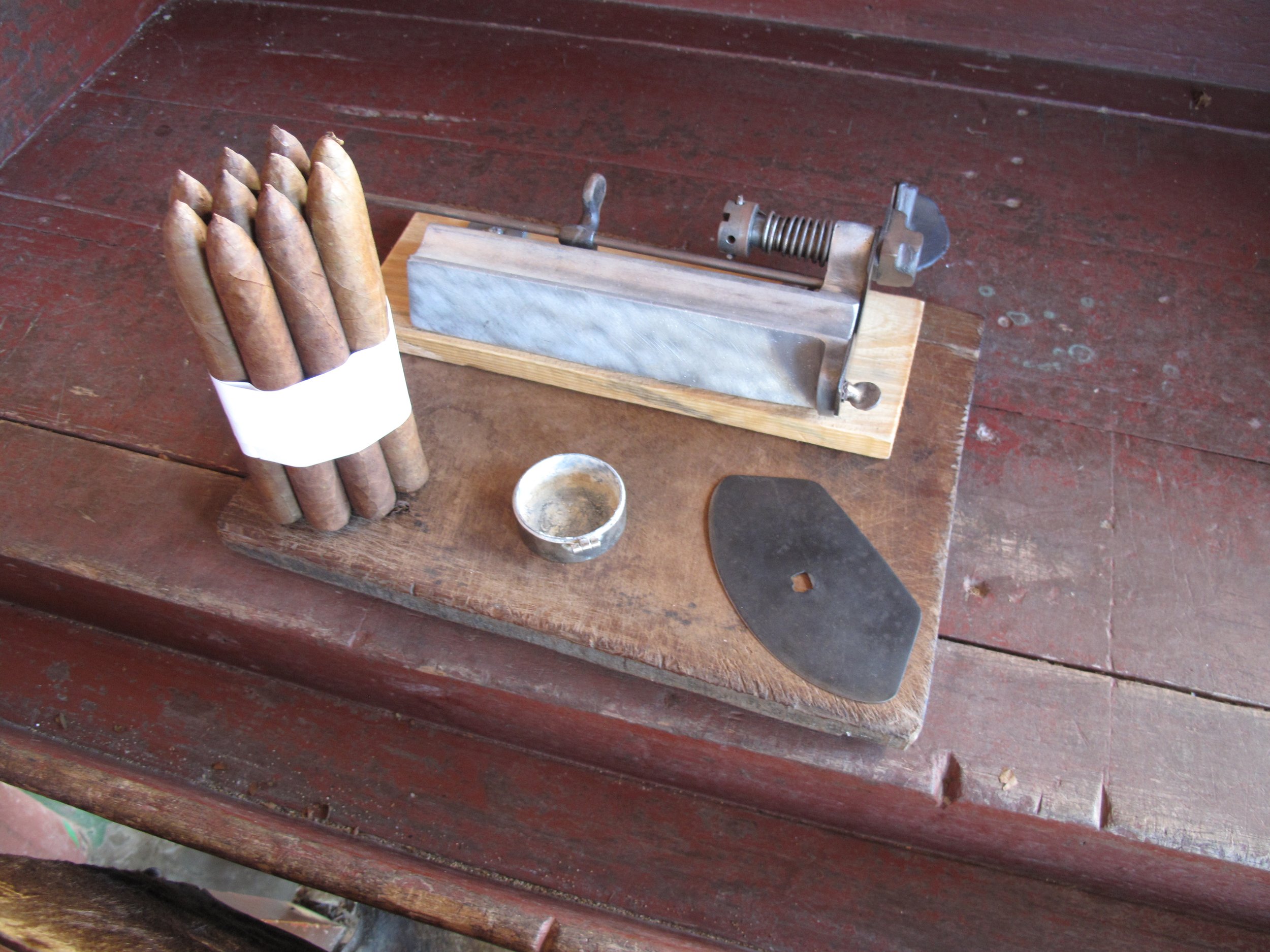Cuba. The World’s Finest Cigar Tobacco
Where does the world’s finest tobacco come from? At least some would say Cuba’s Viñales Valley. Located southeast of the Sierra de los Oranos Mountains, the valley’s fertile soil and subtropical climate make it ideal for growing tobacco. The Spanish learned about smoking dry tobacco leaves from Cuba’s native Taíno peoples and in the early sixteenth century they introduced cigars to Western Europe. Demand grew rapidly and by the 1800s, the Viñales Valley supported more than 3,000 vegas (tobacco plantations).
Tobacco is still grown following traditional methods. Water buffalo are used to plow fields while harvested tobacco leaves are transported by horse-drawn carts. Along with tobacco, coffee beans, corn, sugar, rice, and fruits and vegetables are grown in the valley. Most of the valley’s tobacco is shipped to Havana where it is hand-rolled and sold under well-known labels such as Chohiba, Romeo y Julieta, and Montecristo. A longstanding trade embargo prevents cigars and other Cuban products from being imported into the U.S. For cigar lovers, a visit to the valley offers a unique opportunity to see how premium tobacco is grown and prepared. There is at least one other reason to visit the Viñales Valley. Rising upwards from its floor are gigantic rock towers called mogotes. With steep sides and flat tops, they are leftovers from the Jurassic Period (200 to 145 million years ago) when the valley was covered by an ancient sea. Mogotes are visually stunning examples of tower karst topography and something every visitor to Cuba should see.
A few years ago, I had a chance to co-lead a university trip to Cuba that included a few days exploring the Viñales Valley. Departing Havanna, our bus ride to the valley took three hours. At the Hotel Los Jazmines we dropped off luggage and relaxed on the pool terrace with its view of pin-cushion shaped mogotes. Reboarding our bus the next day, we drove to a farm where rows of green tobacco plants rise from ruddy red soil. We watched as a veruero (tobacco farmer) wearing a green army-style uniform arranged recently cut leaves on a wooden drying rack. Inside a small building, another farmer was rolling cigars from dried tobacco leaves that were organized in bundles to sell to tourists.
The process of growing high-quality tobacco requires diligence and timing. Seeds are planted in bins during the late fall and then covered with a protective layer of leaves. After about eight days the tiny plants are transplanted into the fields. The tobacco grows quickly and is harvested after just two months, usually between late February and early March. The leaves are then fermented in a solution that may include rum, sugar cane juice, water, and fruit and hung to dry for one to two months in huts called vara en tierra. Additional drying time is sometimes added to bring out complex flavors. A benefit of air-curing is lower sugar content and a higher concentration of nicotine. By law, each farmer must give the government 80% of their proceeds. I bought a small bundle of cigars from a veguero.
On our second night in the valley, we visited Viñales (population 10,000). Located about three kilometers from our hotel, the town was once home to a maroon (runaway slave) community and gained recognition in 1882 when it became a stop on the train line between the cities of Puerto Esperanza and Pinar del Río. With a small town feel, Viñales has wide streets and flat-top buildings. More than a thousand of its pastel-colored houses have been converted into casa particulars (rental houses) to serve tourists.
Our bus made another stop at Cueva del Indio (Indian’s Cave), located five kilometers north of Viñales. Discovered in 1920, the cave was used by Guanajatahey Indians and is part of forty-five kilometers of caves known to exist in the valley. We climbed down a stone staircase and walked through a portion of the cave before boarding a boat for a short ride within a flooded section. Measured from the water’s surface, the chamber’s ceiling was more than ninety meters tall. Nearby, we stopped to see Mural del la Pre-Historia (Prehistoric Mural) that depicts the history of life in Cuba from prehistoric organisms to human occupation. Begun in 1961, it took Leovigildo Gonzales and his assistants four years to paint the 122-meter-wide image on one side of a mogote. In addition to being an artist, Gonzales was a scientist and cartographer at the Cuban Academy of Sciences.
If you are interested in learning more about Cuba, please see my article: Tobacco Farming, Cigar Production and Cuba’s Viñales Valley (© 2015 American Geographical Society).






